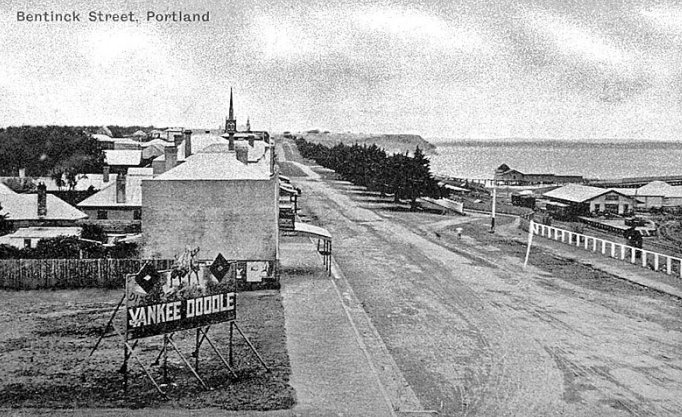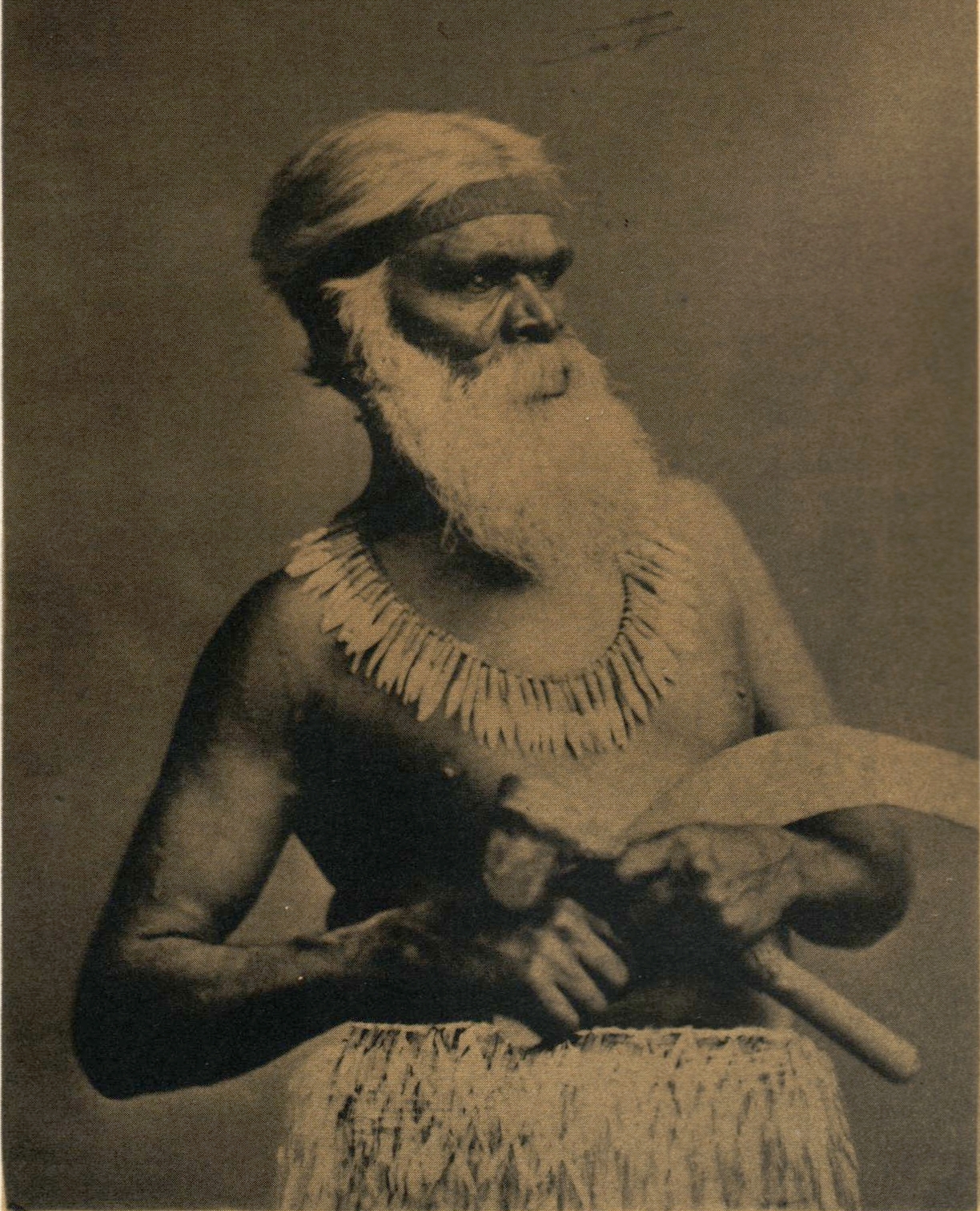|
Gunditjmara
The Gunditjmara or Gunditjamara, also known as Dhauwurd Wurrung, are an Aboriginal Australian people of southwestern Victoria. They are the traditional owners of the areas now encompassing Warrnambool, Port Fairy, Woolsthorpe and Portland. Their land includes much of the Budj Bim heritage areas. The Kerrup Jmara (Kerrupjmara, Kerrup-Jmara) are a clan of the Gunditjmara, whose traditional lands are around Lake Condah. The Koroitgundidj (Koroit gundidj) are another clan group, whose lands are around Tower Hill. The Djargurd Wurrung, Girai wurrung, and Gadubanud are also Aboriginal Victorian groups who all spoke languages in the dialect continuum known as the Dhauwurd Wurrung language ("Gunditjmara language"). Name Gunditjmara is formed from two morphemes: ''Gunditj'', a suffix denoting belonging to a particular group or locality, and the noun ''mara'', meaning "man". Language The Dhauwurd wurrung language is a term used for a group of languages spoken by various groups ... [...More Info...] [...Related Items...] OR: [Wikipedia] [Google] [Baidu] |
Budj Bim Heritage Areas
Budj Bim heritage areas includes several protected areas in Victoria, Australia, the largest two being Budj Bim National Heritage Landscape and the Budj Bim Cultural Landscape. Within the latter, there are three Indigenous Protected Areas: the Tyrendarra Indigenous Protected Area, Kurtonitj Indigenous Protected Area, and the Lake Condah Indigenous Protected Area. All of the protected areas are related to the volcanic landscape created by the eruption of Budj Bim (Mount Eccles) more than 30,000 years ago, and the dormant volcano is included in the National Heritage and World Heritage sites (which also include Budj Bim National Park). The various areas are of great historic and cultural significance to various clans of the Gunditjmara, the local Aboriginal people: Budj Bim features in their mythology as a creator-being, and the Gunditjmara people developed an extensive system of aquaculture on the land created by the lava flows up to 8,000 years ago. Tae Rak (Lake Condah) f ... [...More Info...] [...Related Items...] OR: [Wikipedia] [Google] [Baidu] |
Dhauwurd Wurrung Language
Dhauwurd Wurrung is a term used for a group of languages spoken by various groups of the Gunditjmara people of the Western District of Victoria, Australia. Keerray Woorroong (also spelt Girai Wurrung and variants) is regarded by some as a separate language, by others as a dialect. The dialect continuum consisted of various lects such as Kuurn Kopan Noot, Big Wurrung, Gai Wurrung, and others (each with variant spellings). There was no traditional name for the entire dialect continuum and it has been classified and labelled differently by different linguists and researchers. The group of languages is also referred to as Gunditjmara language and the Warrnambool language. Efforts to revive the language(s) are ongoing. Country The language in its several varieties, was spoken from Glenelg to the Gellibrand and through to roughly inland. The effects of the colonisation of Victoria, which included the Eumeralla Wars, along with later government policies leading to the stol ... [...More Info...] [...Related Items...] OR: [Wikipedia] [Google] [Baidu] |
Portland, Victoria
Portland is a city in Victoria, Australia, and is the oldest European settlement in the state. It is also the main urban centre in the Shire of Glenelg and is located on Portland Bay. As of the 2021 census the population was 10,016, increasing from a population of 9,712 taken at the 2016 census. History Early history The Gunditjmara, an Aboriginal Australian people, are the traditional owners of much of south-west Victoria, including what is now Portland, having lived there for thousands of years. They are today renowned for their early aquaculture development at nearby Lake Condah. Physical remains such as the weirs and fish traps are to be found in the Budj Bim heritage areas. The Gunditjmara were a settled people, living in small circular weather-proof stone huts about high, grouped as villages, often around eel traps and aquaculture ponds. On just one hectare of Allambie Farm, archaeologists have discovered the remains of 160 house sites. 19th century European settl ... [...More Info...] [...Related Items...] OR: [Wikipedia] [Google] [Baidu] |
Lake Condah
Lake Condah, also known by its Gunditjmara name Tae Rak, is in the Australian state of Victoria, about west of Melbourne and north-east of Heywood by road. It is in the form of a shallow basin, about in length and wide. The lake is located in the Newer Volcanics Province, a geologically-defined area of western Victoria with the youngest volcanoes in Australia, not far west of the Budj Bim (Mt Eccles) volcano. It lies just outside the boundary of Budj Bim National Park, but within the Budj Bim heritage areas, including the Budj Bim Cultural Landscape, added to the World Heritage List in 2019. The area is known for the extensive aquaculture systems created by the local Gunditjmara people. Location and description The closest town is Heywood, some west of Melbourne. The lake is shallow, and about 4km long and 1km wide. It lies within the Budj Bim heritage areas, an area known for the ancient aquaculture systems created by the Gunditjmara at least 6,600 years ago to trap ... [...More Info...] [...Related Items...] OR: [Wikipedia] [Google] [Baidu] |
Warrnambool
Warrnambool ( Maar: ''Peetoop'' or ''Wheringkernitch'' or ''Warrnambool'') is a city on the south-western coast of Victoria, Australia. At the 2021 census, Warrnambool had a population of 35,743. Situated on the Princes Highway, Warrnambool (Allansford) marks the western end of the Great Ocean Road and the southern end of the Hopkins Highway. History Origin of name The name "Warrnambool" originated from Mount Warrnambool, a scoria cone volcano 25 kilometres northeast of the town. Warrnambool (or Warrnoobul) was the title of both the volcano and the clan of Aboriginal Australian people who lived there. In the local language, the prefix Warnn- designated home or hut, while the meaning of the suffix -ambool is now unknown. William Fowler Pickering, the colonial government surveyor who in 1845 was tasked with the initial planning of the township, chose to name the town Warrnambool. The traditional Indigenous owners of the land today are the Dhauwurd Wurrung people, also know ... [...More Info...] [...Related Items...] OR: [Wikipedia] [Google] [Baidu] |
Girai Wurrung
The Girai wurrung, also spelt Kirrae Wuurong and Kirrae Whurrung, are an Aboriginal Australian people who traditionally occupied the territory between Mount Emu Creek and the Hopkins River up to Mount Hamilton, and the Western Otways from the Gellibrand River to the Hopkins River. The historian Ian D. Clark (historian), Ian D. Clark has reclassified much of the material regarding them in Norman Tindale's compendium under the Djargurd Wurrung, a term reflecting the assumed pre-eminence of one of their clans, the Jacoort/Djargurd. Language The Giray language (''Girai wurrung'' meaning literally "blood lip language") spoke a dialect of Dhauwurd Wurrung language ("the Warrnambool language"), which belongs to the Kulinic languages, Kulinic branch of the Pama-Nyungan languages, Pama-Nyungan language family. James Dawson (activist), James Dawson and his daughter Isabella took down extensive vocabulary lists of it and related dialects. A dictionary of the language was compiled in the 1 ... [...More Info...] [...Related Items...] OR: [Wikipedia] [Google] [Baidu] |
Condah
Condah is a small town in south west Victoria, Australia and is located on the Henty Highway north of Heywood. At the 2006 census, Condah and the surrounding area had a population of 272. It is about to north-west of Lake Condah, Budj Bim National Park and Budj Bim. History * Condah Pub has been open since 1854 and still thrives today. * A cemetery was set aside in May 1863. * Condah Post Office opened on 12 May 1868 and closed in 2001. * Two churches were opened, one Anglican in 1883, one Presbyterian in 1908. Traditional ownership The formally recognised traditional owners for the area in which Condah sits are the Gunditjmara People who are represented by the Gunditj Mirring Traditional Owners Aboriginal Corporation. Notable people *W J (Billy) Millard, the winner of the inaugural 1878 Stawell Gift was a resident of Condah; * Andrew Lovett, Wally Lovett, Glenn Lovett Glenn Lovett (born 23 July 1969) is a former Australian rules footballer who played for Melbo ... [...More Info...] [...Related Items...] OR: [Wikipedia] [Google] [Baidu] |
Victorian Aboriginal Corporation For Languages
Aboriginal Victorians, the Aboriginal Australians of Victoria, Australia, occupied the land for tens of thousands of years prior to European settlement. Aboriginal people have lived a semi-nomadic existence of fishing, hunting and gathering, and farming eels in Victoria for at least 40,000 years. The Aboriginal people of Victoria had developed a varied and complex set of languages, tribal alliances, beliefs and social customs that involved totemism, superstition, initiation and burial rites, and tribal moieties. History Prehistory There is some evidence to show that people were living in the Maribyrnong River valley, near present-day Keilor, about 40,000 years ago, according to Gary Presland. At the Keilor archaeological site a human hearth excavated in 1971 was radiocarbon-dated to about 31,000 years BP, making Keilor one of the earliest sites of human habitation in Australia.Gary Presland, Keilor Archaeological Site', eMelbourne website. Accessed 3 November 2008 A crani ... [...More Info...] [...Related Items...] OR: [Wikipedia] [Google] [Baidu] |
Aboriginal Victorians
Aboriginal Victorians, the Aboriginal Australians of Victoria, Australia, occupied the land for tens of thousands of years prior to European settlement. Aboriginal people have lived a semi-nomadic existence of fishing, hunting and gathering, and farming eels in Victoria for at least 40,000 years. The Aboriginal people of Victoria had developed a varied and complex set of languages, tribal alliances, beliefs and social customs that involved totemism, superstition, initiation and burial rites, and tribal moieties. History Prehistory There is some evidence to show that people were living in the Maribyrnong River valley, near present-day Keilor, about 40,000 years ago, according to Gary Presland. At the Keilor archaeological site a human hearth excavated in 1971 was radiocarbon-dated to about 31,000 years BP, making Keilor one of the earliest sites of human habitation in Australia.Gary Presland, Keilor Archaeological Site', eMelbourne website. Accessed 3 November 2008 A craniu ... [...More Info...] [...Related Items...] OR: [Wikipedia] [Google] [Baidu] |
Tower Hill (volcano)
Tower Hill is an inactive volcano on the south-west coast of Victoria, Australia, approximately west of Melbourne, and north-west of Warrnambool. The Tower Hill crater is roughly wide and high, with a gradient of between 10% to 80% at the higher points. Within the crater, a series of later volcanic explosions formed a number of scoria cones and spheres, surrounded by a crater lake. Being a giant nested maar, Tower Hill is of international geological significance. The Dhauwurdwurrung name for the volcano is ''Koroitj''. History Aboriginal Australian kitchen middens at Tower Hill contain 5000-year-old Tasmanian devil bones. Greenstone axe heads and other artefacts excavated from the tuff indicate that Aboriginal people were resident in the area when the volcano erupted. A basalt tool dubbed the "Bushfield Axe", found buried under volcanic ash near Tower Hill in 1947, was particularly significant. The archaeological evidence aligns with local people's oral histories ... [...More Info...] [...Related Items...] OR: [Wikipedia] [Google] [Baidu] |
.jpg)


.jpg)